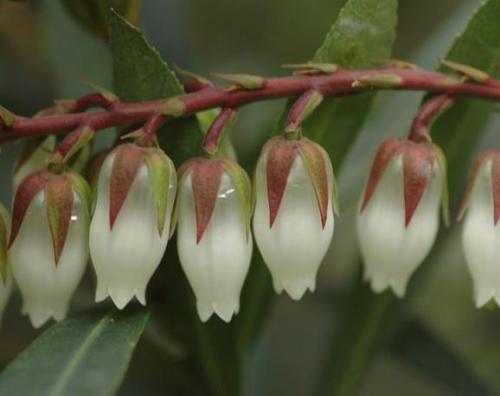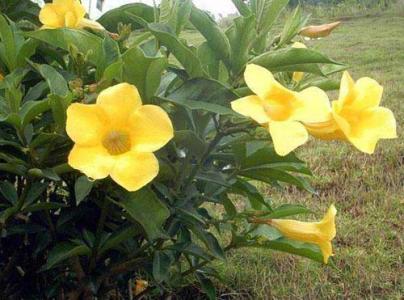First, the culture method of Pearl Plum
1. Soil:
Pearl plum does not have high requirements for soil, saline-alkali resistance, with deep and fertile sandy loam soil is appropriate, can make its growth more exuberant, flowering more luxuriant.
2. Fertilization:
Pearl plum is more tolerant to barren, and the requirement for fertilizer is not high. In addition to applying appropriate amount of organic fertilizer at the initial stage of cultivation, daily maintenance generally does not need additional fertilization, but proper topdressing of nitrogen, phosphorus and potassium compound fertilizer at the beginning of spring can make the plant grow more vigorously, bloom more and prolong the flowering period. In addition, combined with winter management, base fertilizer can be applied every 1-2 years.

3. Watering:
Pearl plum likes the humid environment, stagnant water can easily lead to rotten roots, and lack of water affects plant growth, so attention should be paid to timely drainage in the rainy season, sufficient water should be watered in the dry season, soil moisture should be loosened in time after watering, and frozen water should be watered and opened in early winter and early spring.
4. Lighting:
Pearl plum is light-loving, but it is also resistant to semi-shade, so it has a very good effect on greening and beautifying the shady side of the north side of the building.
5. Pruning:
Pruning old branches, disease and insect branches and residual flower branches in time after flowering can not only keep the plant shape neat and beautiful, but also avoid unnecessary nutrient consumption and make its growth more robust and luxuriant.
6. Insect pests:
The diseases of Pearl Plum are less, and the main pests are diamondback moth, red spider and shell insect. 1000 times of omethoate EC can be used to kill scale insects, 1000 times of trichloropropofol can be used to control red spiders, and 1000 times of 50% marathon EC can be used to prevent diamondback moths.
7. Reproduction:
Pearl plum can be propagated by means of ramet, striping, cutting, sowing and so on, but because its seeds are small and difficult to sow, sowing is usually not used. Pearl plum is usually propagated by ramets, which is carried out during the sprouting period in spring or after defoliation in autumn, and the sprouting seedlings with roots are dug out, and 3-5 plants are taken as a clump and planted separately. When planting, apply 2-lift compost as base fertilizer, and pour water thoroughly after planting. Water can be watered about once a week in the future. Until they survive.
How to raise bonsai of pearl plum and the culture method of pearl plum
Pearl plum, also known as snowflakes, deciduous shrubs, 2-3 meters high. Branches spreading; branchlets curved, glabrous or puberulent, light green when young, dark yellowish brown or dark reddish brown when old. Elegant white flowers bloom in midsummer and bloom for a long time. Pearl plum is also often used to make bonsai. This article introduces how to raise bonsai and how to raise it.
How to raise bonsai of pearl plum
The main results are as follows: 1. it is not strict with the soil, but it grows better and blossoms more luxuriantly in the deep and fertile sandy soil.
2. The requirement of fertilization is not high, and it is necessary to apply enough base fertilizer to meet its growth requirements, and generally no more topdressing. In the future, combined with winter management, base fertilizer can be applied every 1-2 years.
3. It should be watered in time when it is dry in spring, thoroughly watered in summer and autumn in order to keep the soil from drought, and need to be watered once before winter.
4. After flowering, the residual flower branches, disease and insect branches and old and weak branches should be pruned in time to keep the plant type neat, avoid nutrient consumption, and promote its robust growth and luxuriant flowers.
Culture method of Pearl Plum
Pearl plum has strong adaptability and does not have high requirements for fertilizer. except for a small amount of base fertilizer for newly planted plants, it does not need rotating fertilizer, but it needs watering. Generally, it is watered 2-3 times during the period from leaf bud germination to flowering, and the Beginning of Autumn is watered 2 or 3 times from post-frost to frost, including anti-freezing water, which is watered according to drought in summer and needn't be watered when it rains a lot.
The inflorescence of pearl plum blossom is withered and yellow, which affects its appearance, so the residual inflorescence should be cut off to make the plant clean and tidy, and avoid the residual inflorescence competing with the plant for nutrients and water. Diseases and insect pests and old and weak branches should also be cut off after autumn or early spring, and annual branches can be strongly pruned to promote the renewal of branches and the flourishing of flowers and leaves.
When the weather is dry, the soil should be watered in time to keep the soil moist, anti-freezing water should be watered once before winter, flower branches should be cut off immediately after flowering, old and weak branches should be cut off before winter, sufficient basic fertilizer should be applied before new plants, and fertilized once every 2-3 years.
On the pearl plum bonsai how to raise and pearl plum breeding methods are introduced here, hoping to help you better care of pearl plum.
Culture methods of Pearl Plum in North China
Pearl plum in North China is not strict on the soil, cultivation is relatively easy to survive, has strong drought tolerance, cold tolerance, exuberant growth. Can be combined with plastic modeling for 3 or 4 times a year, or cut short, can achieve plump branches, beautiful shape.
The seeds were collected from September to October every year, and the fruit was placed in a ventilated and cool room, dried in the shade, rubbed gently, removed the seed shell and impurities, and stored in a paper bag.
Rake the ground flat and fine, sow the seed mixture, cover the thin soil after sowing, preferably humus soil, and then spray water with a spray pot to closely combine the seeds with the soil. After sowing, sprinkle water once or twice a day, raise seedlings in open field for 3 or 5 days, and keep the soil moist at seedling stage. The height of one-year-old seedlings is 5~15cm, while that of two-year-olds can grow to about 50cm. Two-year-old transplant, row spacing 40cm × 60cm, 4-5 years old out of the nursery.
In April, the cuttings were cut on the sturdy branches, the length of the cuttings was 10~15cm, the upper end was cut flat, the lower end was cut into horseshoe shape, and the incision was smooth. In bundles, the lower end was soaked in ABT1 solution with a concentration of 100mg/kg for 1 hour. The cuttings were vertically inserted into the soil and retained about 1cm on the surface, and the plant-row spacing was 10cm × 30cm. Water thoroughly immediately after insertion, once a week or twice a week, loosen the soil and weed in time.
Cuttings usually take root and sprout in 20-30 days. The height of hardwood cuttings can generally reach 30~50cm in the same year, and transplant in the spring of the second year, the row spacing is 40cm × 60cm, cut dry when transplanting to promote branching. After planting for 2-3 years, the plant height can reach more than lm, and 5-10 branches per clump can come out of the nursery.
- Prev

Can horse drunken wood be hydroponically cultivated? how long can it be fed? Culture methods and matters needing attention of Majiu wood
1. Soil Ma drunk wood likes acid sandy soil rich in decay, which is loose and good in drainage, which is suitable for the growth of horse drunken wood, and can also be made of garden soil and sand. 2. Fertilizing the drunken wood needs enough fertilizer when it grows.
- Next

Maintenance measures and matters needing attention of yellow cicada flower
First, the yellow cicada likes the environment with high temperature, humidity and plenty of light, so put the yellow cicada in the courtyard or in a place with direct sunlight, but be careful not to breed indoors, so as to avoid accidental poisoning. Second, the yellow cicada flower is resistant to moisture and likes a humid environment
Related
- Fuxing push coffee new agricultural production and marketing class: lack of small-scale processing plants
- Jujube rice field leisure farm deep ploughing Yilan for five years to create a space for organic food and play
- Nongyu Farm-A trial of organic papaya for brave women with advanced technology
- Four points for attention in the prevention and control of diseases and insect pests of edible fungi
- How to add nutrient solution to Edible Fungi
- Is there any good way to control edible fungus mites?
- Open Inoculation Technology of Edible Fungi
- Is there any clever way to use fertilizer for edible fungus in winter?
- What agents are used to kill the pathogens of edible fungi in the mushroom shed?
- Rapid drying of Edible Fungi

